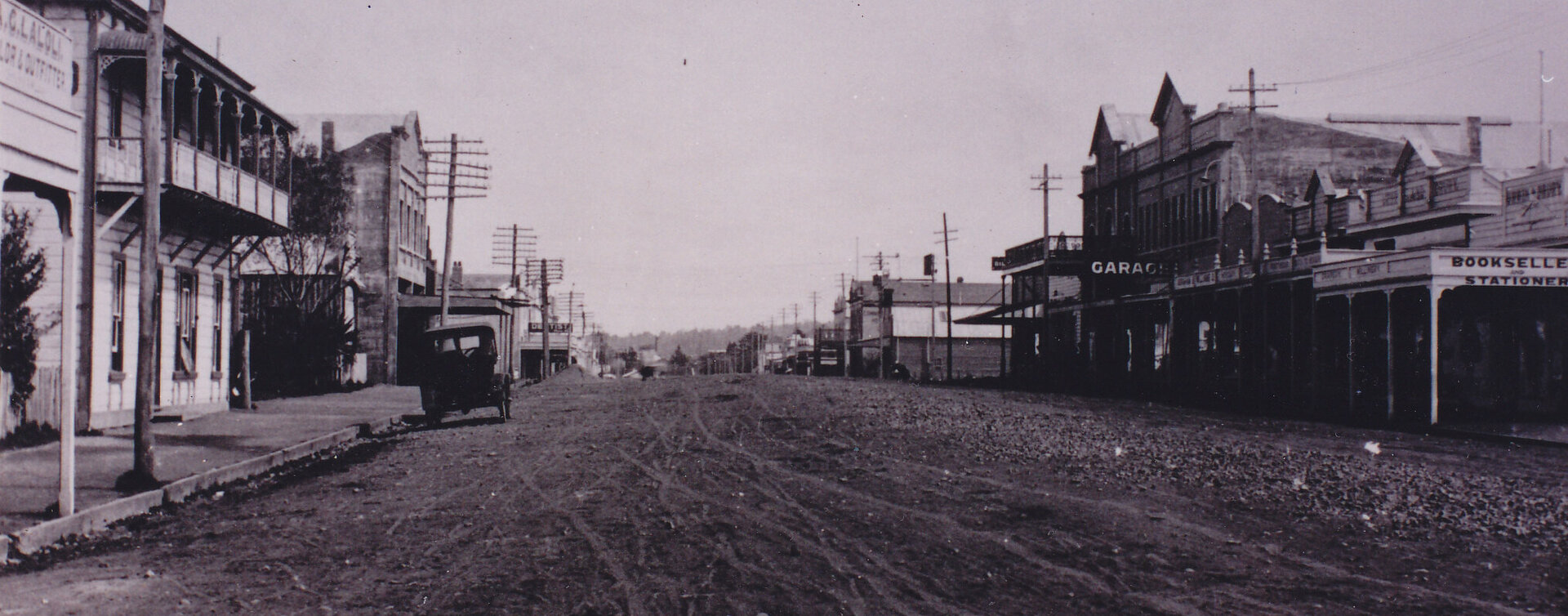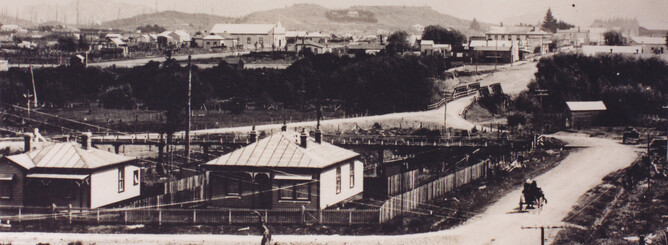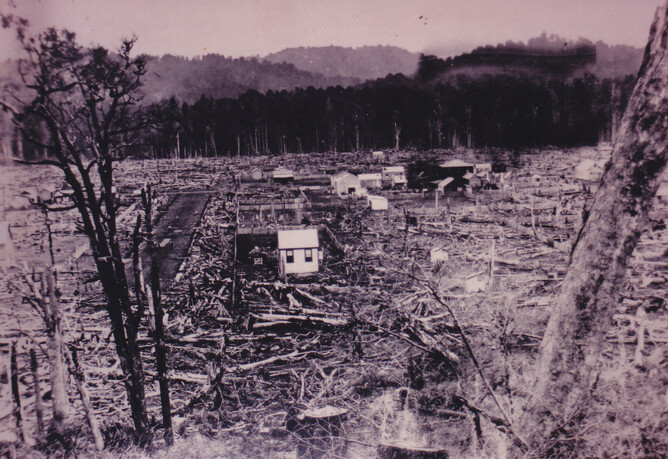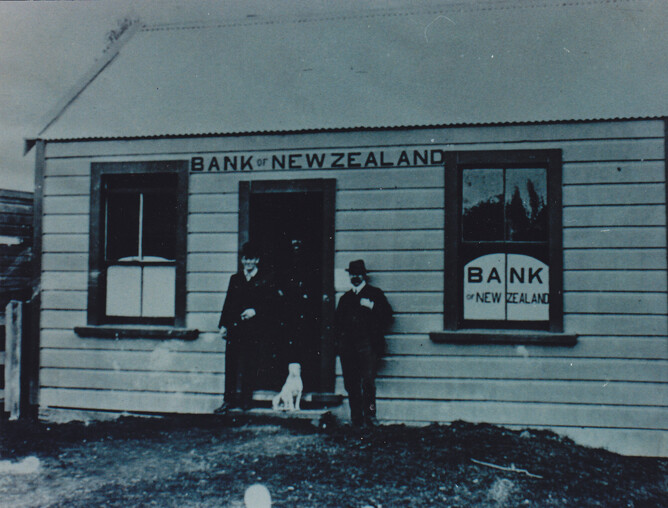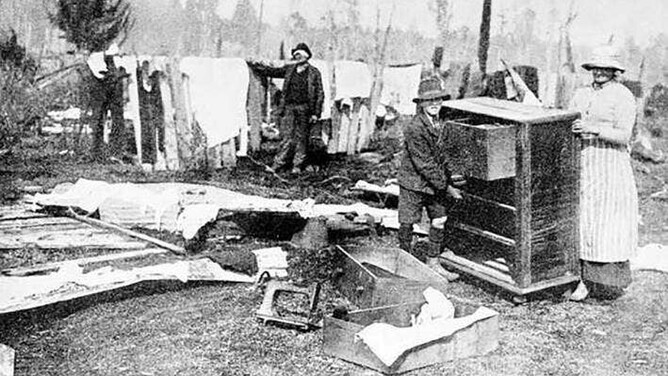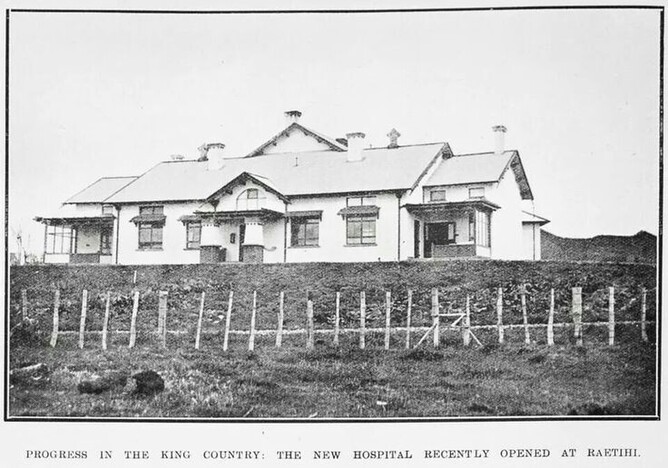A Short history of the town compiled by Dorothy Battersby from her father Joseph Pierce Punch's memoirs
Mr Punch's father John and Alex Bennett started the first sawmill in Raetihi in 1893
Raetihi is preparing to celebrate its centennial on Wellington Anniversary weekend 1993 with a mock sale of the 80 original sections. The Government purchased the Waimarino Block in 1887, later some parts of the area were sold to prospective sawmillers and sections were put on sale to the public at prices ranging from £5.0.0 to £25.0.0 per quarter acre.
The first mill cut the bush from the King St area of Raetihi and two draught horses hauled the logs into the mill, bullock teams were then purchased in Palmerston North and plant and an engine were brought up through Taihape. Bennett and Punch had four wills in the centre of Raetihi - the second mill was behind where Andersons Butchery Shop now stands, the third where St Mary's Hall is today and the fourth in Grey St.
In 1893, after other people had come to live in the settlement application for a Post Office in the town was made, the settlement had been known as Makotuku, but was renamed Raetihi as there was already a town named Makotuku on the East Coast, a post office was opened on April 24 on the same day as one opened in Ohakune. Records show that - in the township things were slowly progressing, Mr Wyche has a house almost finished, Mr Bowick a blacksmith shop nearly finished, Merson's store all but ready for occupation and Mr Punch snr. is building a boarding house.
In the light of such progress Mr Webberly was appointed postmaster, within two years the town had four postmasters, the fourth one settled down, he was al.so manager ofHatrick's General Store and post office business was carried on over the shops counter, money order facilities opened in December 1895, then a small one roomed Post Office was attached to the store when the business grew to warrant it.
Bushmen and navvies came to find work in Raetihi, Pikes built a two-storeyed boarding house in 1894, a butchery business was opened with stock being killed in the paddocks where it was purchased.
In 1896 the first school opened in the sitting room of Pike's house with 11 pupils, some six weeks later a one roomed school opened in the northern end of Ward St., the school had no playground and the children played amongst the trees, directly opposite the school the Wesleyan church was built, by this church there was a large stone where the children used to go to sharpen their slate pencils. The church building was the only one in the settlement for some years, it later became the Methodist church and was moved to its present site by means of rollers, along King St and into Duncan St it is now being used as a private dwelling after having also been used as a play centre. The first Anglican service held in Raetihi was in 1899 with a Mr Herman officiating.
In 1909 a Mr Stent was appointed as the first vicar of the Anglican Church.
The Waimarino Agricultural and Pastoral Association held its first show in 1911. The Raetihi Town Council was gazetted in 1912.
The first World War 1914-18 took some of the districts finest men.
Between 1908 and 1922 was the busiest in the milling heyday, at one time 22 mills were operating between Raetihi and Rangataua, a distance of only 10 miles (16Kls). Timber, which had been carted to Pipiriki to be loaded onto boats was now to be railed to the cities with the completion of the main trunk line in 1908, this took much away from the Whanganui River waterway, when previously this had been the only service available.
Tourists had flocked to Pipiriki from all over the world, Pipiriki had a fine hotel and upriver a houseboat which catered on a grand scale for visitors. After an overnight stay there they would go on a stagecoach through to Raetihi, Ohakune, and Waiouru to Tohaanu and Taupo.
In 1917 Raetihi had power, water and a sewerage system and the railway branch line from Ohakune also opened.
The Raetihi fire in March 1918. Much has been written about this disaster which swept through the area taking all in its path, so fierce were the flames, fanned by a strong gale that boards off buildings went flying through the air like paper, three lives were lost, homes were burnt in minutes, stock units perished by the thousands. Once again it was time to rebuild, and much help was given from around the country, the fire did have the beneficial effect of cleaning up the previously milled areas and so farming steadily developed.
In that same year Hohepa Kanawa offered the Wanganui Hospital Board five acres of land across the Makotuku Stream for the purpose of building a hospital for Maori and Europeans. He wanted the Maori to occupy one end and the Europeans the other, he even stated he wanted a "native nurse" and interpreter if need be. However the board advised an area of 15 acres had been set aside for a hospital to be built. A government subsidy was forthcoming, building began in 1921 and the hospital opened in 1922.
The Raetihi Borough Council was formed in 1921.
Both Anglican and Catholic churches were rebuilt about 1923. The Mangapurua Valley was settled by returned servicemen- allocated by ballot - after the war but poor access and hard conditions proved very tough and farms were eventually abandoned.
As the land was cleared farming became the biggest industry, thousands of ewes being sold at ewe fairs, between 1935 /50's numbers exceeded 30,000. These were keenly sought by buyers from all parts of the North Island because they were bred in such harsh climatic conditions. The rail branch line was the chief means of transporting stock to the rail head and all parts of the island, this eventually closed in 1968. Through the 40'and 50's New Zealand had prosperous years, hundreds of tons of fertiliser were spread and aerial topdressing came into its own. Fat lamb sales from the area exceed 150,000 annually and the district has a great input into the export markets. Land prices soared, the Waimarino County Council kept the rural area in good heart and for many years it ran a debt free council, much work was done with roading and replacing bridges.
The Chinese played an important role in the area, they realised the potential of the soil and hundreds of acres of vegetables are now grown in the district and is now one of our major industries. Another interesting feature of the area being in the King Country, is that for over 60 years it was a 'dry area', this means that intoxicating liquor could not be sold. This rule must have been broken a thousand times and many are the humorous stories told of how people managed to get their 'spirits'in.
In 1977 a large thermo mechanical mill was built at Tangiwai, it brought work and a lot of new people to the area. The mountains provided a big draw for tourists, Ohakune has reaped the benefit of a good many property sales, Raetihi only 11kms away has also benefited. Tourism to the district is a steady industry as not only have we snow in winter but summer activities, fishing in unpolluted streams, bush walks, tramping, cycleways, canoeing, jet boating and being central to Lake Taupō for boating, hot mineral pools, white water rafting, and hunting in the Whanganui River back country and Kaimanawa Ranges.
Raetihi, while feeling the impact of the economic downturn is a fine little town, those who have settled here love it, we are proud of our district, and we owe much to the pioneers who worked so hard that we might benefit.
